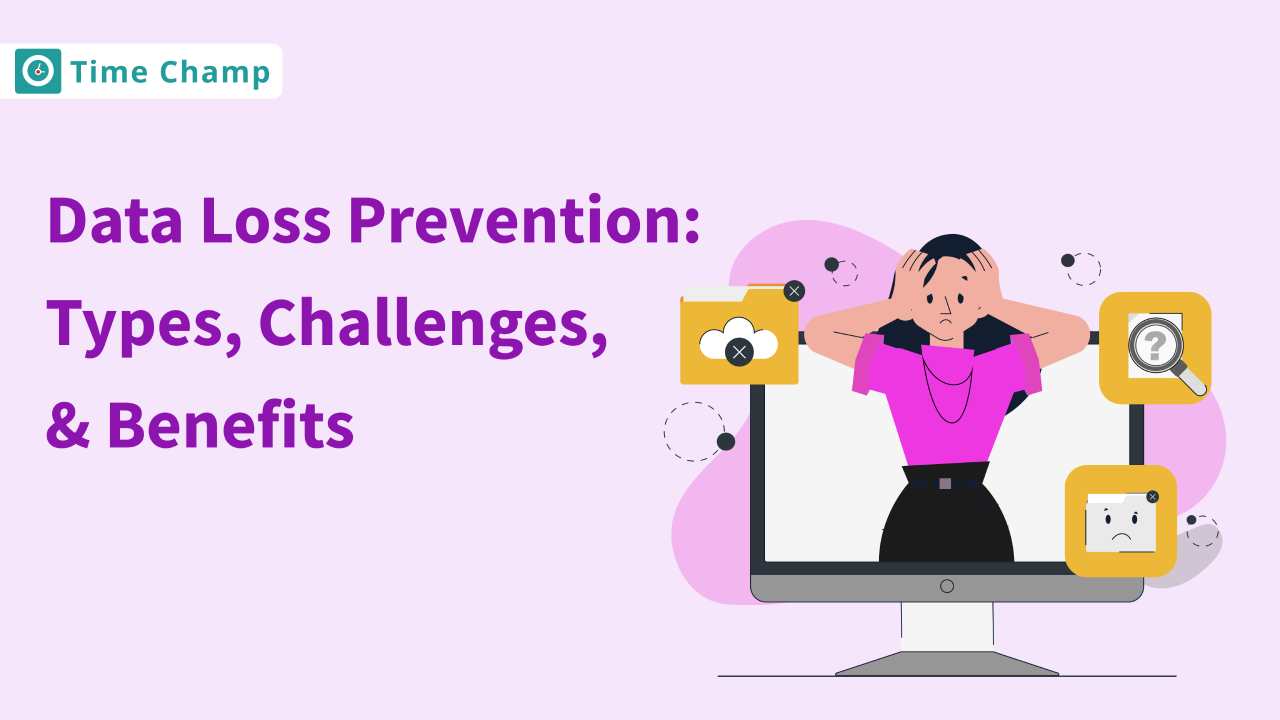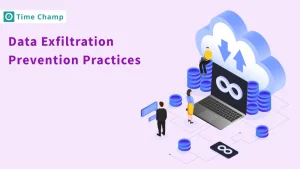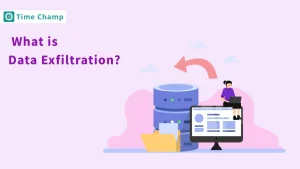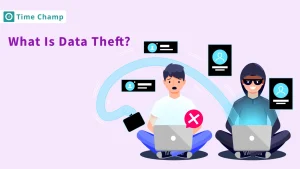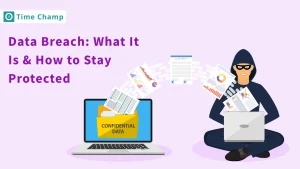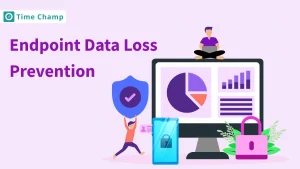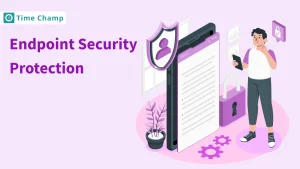The protection of sensitive data is much more vital now than ever in the business world. It may be financial records, customer information, or internal communications, implementing data loss prevention measures is crucial. Loss of critical data will have severe consequences for your organization. You need to be proactive to protect this information securely.
This is where Data Loss Prevention(DLP) comes in. DLP refers to policies, technologies, and practices that aim to prevent unauthorized access, transfer, or loss of valuable data. You may often find it challenging to determine how to get started with the growing complexity of threats and data security challenges. In this blog, you will learn about the different types of data loss prevention solutions, the benefits of implementing DLP in your organization, and the challenges you might face along the way.
Let’s see about the essentials of Data loss prevention and how you can use it to keep your organization’s data secure.
What is Data Loss Prevention?
Data Loss Prevention (DLP) is the strategy that helps you protect sensitive information of your organization from being lost, stolen, or accessed by unauthorized persons. Importantly, as a manager, you must ensure that important data, whether stored on company servers, in the cloud, or in the hands of employees, remains safe. Data loss prevention tools indeed track who is using data, to whom it is being sent, and where it is moving, to prevent accidental or intentional leaks. Therefore, with DLP you can minimize the chances of a data breach, comply with privacy rules, and safeguard the reputation and value of your company.
How Does Data Loss Prevention Work?
Data loss prevention plays an important role in protecting your company’s sensitive information through these essential steps.
1. Identifying Sensitive Data
The first step of any DLP solution is discovering what needs to be protected. This can include private employee information, customer details, company secrets, or even financial records. DLP software locates this data, which may reside in databases, on servers, or on devices owned by employees, using predefined rules or machine learning. You can customize these based on what is important to your department.
2. Tracking Data Movement
Once the system knows what data to protect, it starts monitoring the movement of that data. Data might move in various forms, such as through email, cloud applications, USB drives, or printed documents. DLP solutions track data as it moves across your network, noting who accessed it, its destination, and whether it left the organization. You will clearly see how sensitive data flows and be able to spot suspicious activity quickly.
3. Applying Security Policies
DLP solutions implement specific policies about how data can be moved and accessed. These rules can then be customized to prevent risky actions, such as copying confidential files to an external drive, or unencrypted sending of sensitive information via email. This way, you can set up rules to fit the needs of your team, for example, to ensure that only a few can access certain files or that data sharing occurs only through approved applications.
4. Blocking Unauthorized Actions
In some cases, DLP even stops actions that go against your organization’s policies. For example, if a person attempts to copy sensitive files into their cloud account or email outside the company, the DLP tool can automatically stop this action. And thus, this ensures that mistakes or potential insider threats do not harm your organization.
5. Alerting and Reporting
DLP solutions alert you in real time when suspicious activity occurs. These alerts help you respond quickly to incidents that may put your data at risk. They provide detailed reports on how sensitive data is being used and by whom, helping you identify trends or vulnerabilities in your data management.
6. Training and Continuous Improvement
So, lastly, DLP isn’t just about tools. It also involves awareness. You can use DLP insights as a way of training your team in the best practices for handling sensitive data. With continuous adaptation to new threats and rule updates that align with the most current security standards, DLP systems evolve over time.
What are the Different Types of DLP Solutions?
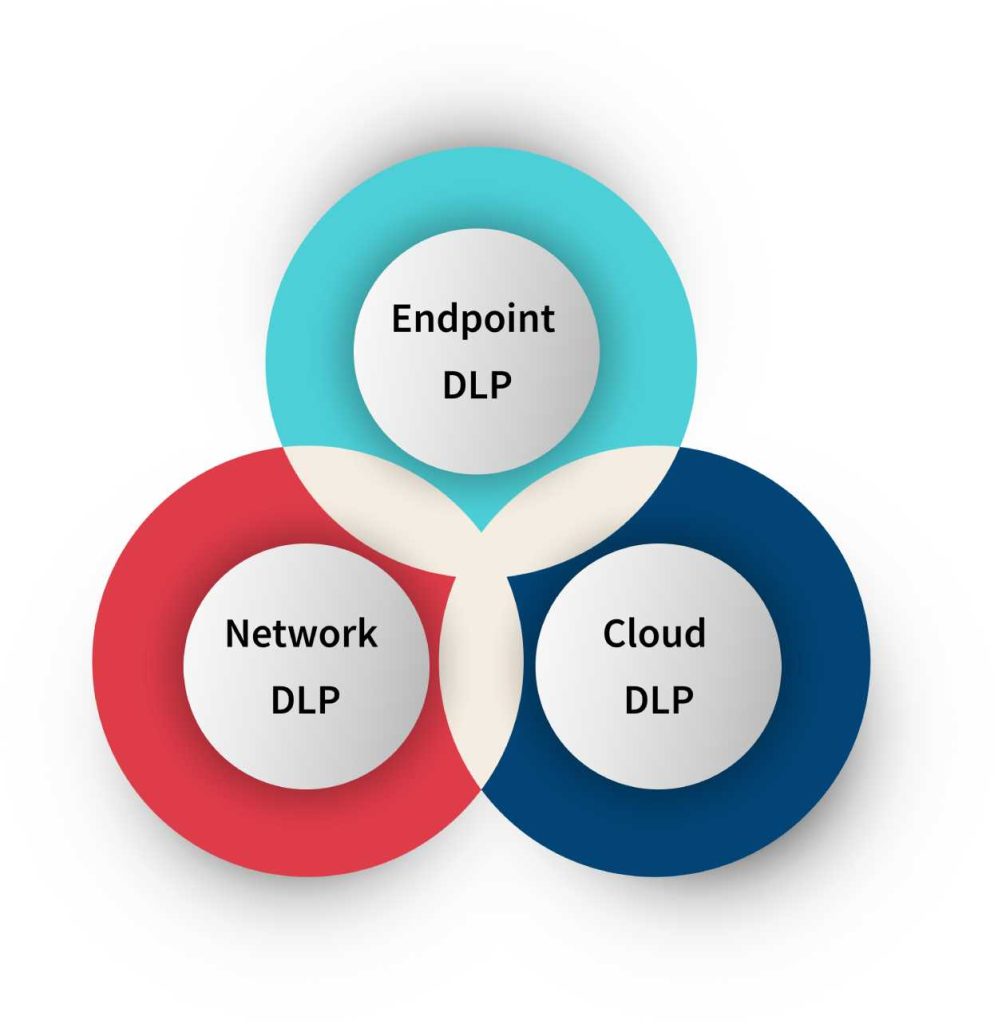
Following are the main types of Data loss prevention solutions.
1. Network DLP
Network DLP basically ensures the protection of data moving in and out of your organization’s network. It scans the inflow and outflow of data, including email, web-based applications, and file-sharing portals. You can imagine Network DLP as a traffic cop for your network. It ensures that data, whether it involves customer information, financial dealings, or intellectual property, doesn’t leave without proper authorization. Establish rules and alerts with Network DLP to catch suspected leaks in real time or even prevent unauthorized data transfers from happening before that leak can happen.
2. Endpoint DLP
Endpoint DLP protects data on individual devices, such as laptops, desktops, and even mobile phones. It is very effective in companies with employees who use personal or organizational devices that may carry sensitive information. With Endpoint DLP solutions, you can stop risky activities such as copying data onto a USB drive or printing confidential documents without permission. Furthermore, it will block or limit file sharing and help monitor what is happening on these devices. Through Endpoint DLP you can add another layer of control over the handling of sensitive data by employees, thereby preventing unintentional or intentional leaks from sources such as employees’ own devices.
3. Cloud DLP
As huge volumes of data are stored and shared in the cloud, many organizations require Cloud DLP. It is a kind of DLP used to secure your data in cloud-based services such as Google Workspace and other platforms like Microsoft 365. Cloud DLP tools monitor and control how your data is stored, accessed, and shared in the cloud, hence protecting it from unauthorized access or leaks. It allows sensitive data to be accessed securely at any time—from remote locations and across teams.
Using a combination of these types of DLP offers well-rounded protection for data across your network, devices, and the cloud. In today’s digital environment, a layered approach is essential to protect your organization’s sensitive information.
What are the Main Benefits of Implementing DLP?

Here are the main benefits of implementing Data loss prevention.
1. Protects Sensitive Data
It is very important to protect sensitive data, such as customer information, financial records, and private business data. Essentially, DLP becomes an online protective barrier ensuring that only the right people access and share that data. It prevents unwanted leakage of information whether inadvertent or deliberate, thus protecting your business against unwanted expensive breaches.
2. Strengthens Compliance
With the surge of data protection compliance like GDPR, HIPAA, and PCI-DSS, meeting these requirements is essential. DLP will facilitate this and ensure you adhere to these laws by having full control over how sensitive data is handled in your organization. This puts you safe from legal troubles that may arise and fines, giving you peace of mind knowing you’re always up to par with the industry standards.
3. Reduces Risk of Insider Threats
Some of the greatest risks to your data come from internal sources, such as a staff member mishandling information or a bad actor within your organization. DLP minimizes insider threats by keeping an eye on what’s happening within your organization that might allow sensitive data to leak out and helping you catch those issues early enough to avoid a data breach.
4. Boosts Customer Trust
Your customers entrust you with their personal and business information, so DLP shows them you respect their privacy and that their information is safe. The more they know their information is protected, the more confident they will feel when doing business with you. This creates stronger bonds in the relationship and enables you to maintain their trust over time.
5. Cost Savings
Prevention of data breaches and compliance violations saves your company money. Data breaches can result in expensive recovery efforts, fines and do damage to your reputation. DLP can help steer clear of such costs by stopping the problem before it arises, preserving your company’s finances and reputation in the process.
What are the Challenges of DLP?
Some of the main challenges of data loss prevention(DLP).
1. Balancing Security with Usability
The tricky part of DLP is finding a balance between security and usability. Controls should neither be so strict that they slow down work nor so loose that they put data at risk. To protect data without affecting productivity, you need to carefully adjust DLP settings and routinely review them to maintain both security and efficiency.
2. Handling False Positives and Negatives
DLP tools tend to flag legitimate data as risky (false positives) or miss actual risks (false negatives). Constant adjustments are necessary to reduce these inaccuracies so that your team is not bombarded by unnecessary alerts, nor exposed to unrecognized threats. By Improving accuracy, you can make DLP manageable and effective.
3. Adapting to Cloud and Remote Work
With cloud platforms and remote access, new security challenges emerge for DLP. Traditional protections may not be enough to secure data in cloud environments or to support remote work. Updating your DLP strategy will help keep data safe across different access points, meeting the needs of today’s flexible work setups.
4. Data Visibility and Classification
Knowing where sensitive data is stored, and how critical it is, is a challenge without proper visibility. Incorrect data classification leads to incomplete DLP coverage. Correct classification of data allows you to set appropriate protections so that the data receives the right level of security.
5. Complex Implementation and Management
Data loss prevention systems usually have to be customized and updated quite frequently, so they can be somewhat tricky to set up. Without an explicit strategy in place, managing DLP might consume too many resources, overwhelming your team. By setting clear rules can simplify things and help keep DLP effective and manageable.
What are the Key Trends Fueling DLP Adoption?
Key trends are driving the adoption of data loss prevention software to assist you to safeguard your organizations sensitive information.
1. Increased Risk of Data Exposure
Data breaches are happening more frequently and are becoming harder to prevent since hackers have made stealing your sensitive information their focus. The damage from such breaches won’t only cost your company money but can also tarnish your reputation. DLP tools ensure that unauthorized people cannot access your data, keeping it safe and reducing the likelihood of these costly breaches.
2. The Shift to Hybrid and Remote Work
This shift to remote and hybrid work means employees are accessing data in so many different places, devices, and applications. As employees access data in new ways, securing it becomes even harder. DLP tools help track how data moves across devices and locations, ensuring all information stays protected no matter where it’s accessed.
3. More Complex Regulatory Demands
The increase in regulations like GDPR, HIPAA, and CCPA requires businesses to be far more open and cautious in their data handling. DLP solutions make the compliance process easy by automatically protecting sensitive data and making auditing easier, ensuring you comply with all regulations without having to put in extra manual effort.
4. Data at the Core of Business Decisions
As the organization grows, data plays an increasingly larger role in decision-making. Losing or having someone steal such valuable data could lead to very serious problems. DLP protects important business data, such as customer information, intellectual property, or financial records, ensuring it remains safe and accessible only to authorized users.
5. Rising Insider Threats—Accidental and Malicious
Not all threats arise from outside your organization. Some might come from the inside, in the form of accidental or intentional exposure by your employees or third-party vendors. Data loss prevention tools reduce this risk by controlling access to data and its distribution, as well as by stopping harmful actions and detecting early leakage through accidents.
6. Strain on IT Resources
The shortage of skilled cybersecurity professionals makes it hard for most companies to properly manage their security needs. DLP helps reduce this challenge by automatically monitoring and protecting sensitive data, so your team doesn’t have to worry about data loss.
Enhance Data Loss Prevention with Time Champ
Time Champ is an advanced Data Loss Prevention solution that helps your company prevent breaches and leaks of sensitive data. Time Champ provides a powerful feature set that ensures only authorized individuals can access and share your data, preventing unauthorized access. Using the key features below, it can enhance your efforts in data loss protection.
File Monitoring:
Time Champ actively monitors file activities, letting you see who is accessing, editing, or transferring files. With this feature, you can quickly trace unauthorized activities and stop potential data breaches in their tracks.
Uploads/Downloads Restrictions:
You can control access through strict rules about who and what can be uploaded and downloaded into and from external sources. Unauthorized data transfers cannot go unnoticed, thus ensuring that your sensitive information does not inadvertently or maliciously leave your organization.
Website Access Control:
Time Champ will allow you to gain control over which websites your employees can access while at the workplace. By blocking harmful or irrelevant sites, you will thus diminish the chances of data being exposed through insecure or irrelevant online activities.
USB Access Control:
Time Champ manages access to all your USB ports, preventing data theft through USB devices. You can block unauthorized devices from being plugged into a USB port, protecting your company’s data from being copied or stolen.
Keystroke Logger:
It logs every keystroke by the users, so you can detect risks, like an attempt to leak confidential information or gain access to restricted areas. This is an added layer of protection through monitoring of user behavior.
With Time Champ, you can strongly strengthen your data loss prevention strategy, ensuring that sensitive data remains safe, accessible to people who need it, and thoroughly protected against the threat of possible loss.
Conclusion
In conclusion, implementing Data Loss Prevention (DLP) is essential to protect your organization’s sensitive information from unauthorized access, leaks, or loss. With proper knowledge of the types of DLP solutions and their key challenges, the right tools can be chosen to protect data across the network, devices, and the cloud. Not only can you build compliance and reduce risk, but DLP also promotes customer trust—something you need to avoid expensive breaches. DLP can become your powerful ally when properly managed, allowing you to keep growing your business without the need to push sensitive information outside your company’s bounds.
Transform your Data Loss Prevention strategy with Time Champ and safeguard your organization's data today!
Signup for FreeBook DemoFrequently Asked Questions
Data loss prevention(DLP) refers to the technologies, strategies, and policies that help in order to prevent the theft, loss or unauthorized access of valuable information. DLP solutions track data movement, control access, and apply rules to ensure that information stays within secure boundaries.
DLP can protect many different kinds of sensitive data, including financial records, customer information, intellectual property, as well as internal business communications, from being accidentally transmitted or stolen. It can cover data stored on servers, in the cloud, or on employees’ devices.
Types of DLP solutions include Network DLP, which monitors data crossing the network, Endpoint DLP, which secures data on devices, and finally Cloud DLP, which protects data stored in the cloud.
DLP solutions detect and prevent insider threats by tracking data movement and monitoring the employee behaviour. Through this, they can recognize risky activities, both intentional and unintentional, that may lead to a leak.
DLP helps mitigate financial risks associated with data loss by preventing data breaches, compliance violations, and insider threats. The bottom line is the saving of costs incurred from fines, legal costs, and reputation damage that ensue after a breach.

